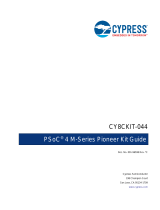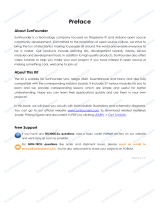3
Product overview
This sensor is able to detect 9 distinct gestures like up, down, forward, backward, rotating, ... to use as an
input for your project. Check out all gesture possibilities in the features below. The module interfaces to
your development board (e.g. Arduino® compatible board) using I²C and is able to detect and report various
gestures including moving up, down, left, right, forward, backwards, rotating clockwise and anti-clockwise,
and waving.
The module has a normal and game mode that can read your gestures at a different speed. The detection
distance is 10 cm and the ambient light immunity is <100k lux. This module has a 12C interface that is easy to
interface with microcontroller boards.
Specifications:
Supply voltage: 5 V DC
Working current: 50 mA
Max. power: 0.5 W
Detection distance: 10 cm max.
Gesture speed: 60 °/s – 600 °/s (in normal mode), 60 °/s – 1200 °/s (in game mode)
Ambient light immunity: < 100k lux
I²C communication speed: max. 400 kbit/s
Working temperature range: -25 - +65 °C
Interface connector: standard 5-pin pin header
Dimensions (W x L x H): 35,5 x 20,1 x 7 mm
Wiring description













